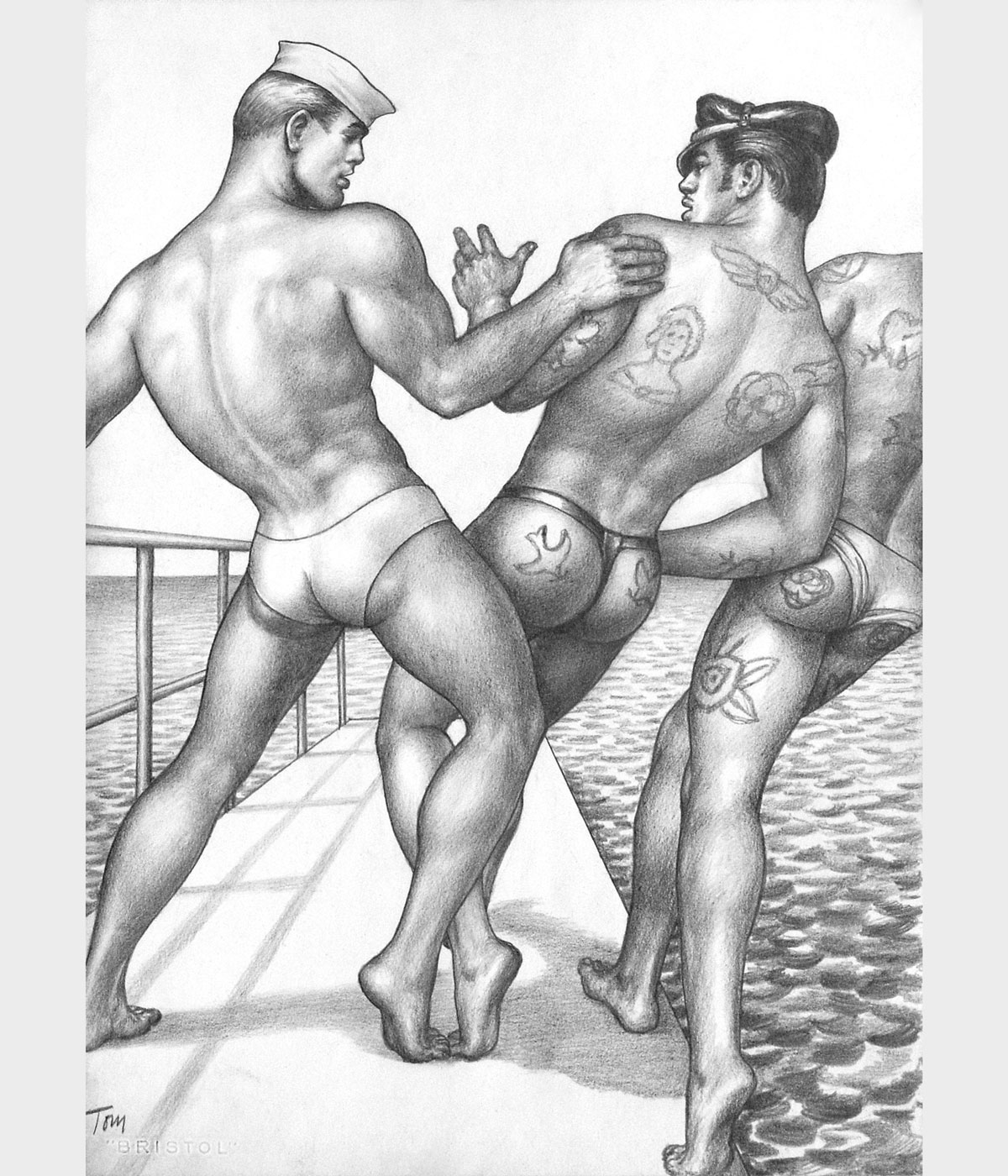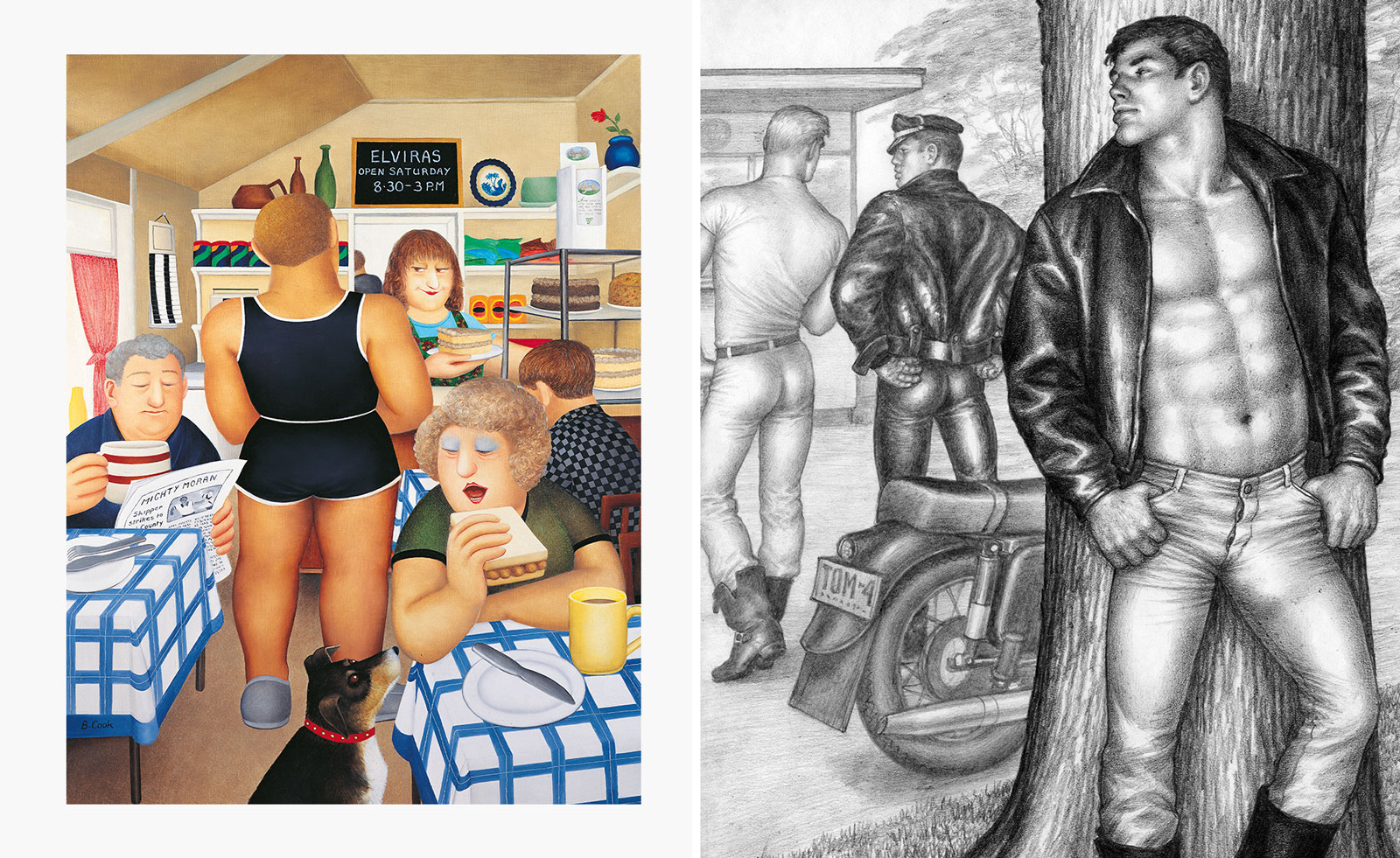
A playful hyperreality appealed to both Beryl Cook (1926-2008) and Tom of Finland (1920-1991), whose work in the 20th century celebrated pleasure for its own sake. Despite obvious differences between the two artists – the UK’s Cook, with her larger-than-life women cavorting in often quintessentially British settings; and Tom of Finland (aka Touko Laaksonen), who lived in both Finland and the US, and his depictions of a queer masculinity – they are linked by their consideration of class, gender and sexuality.
Now, the two are being considered side by side in a London art exhibition at Studio Voltaire, looking at both their work and the impact it had on a wider audience. Here, curator Nicola Wright tells us what unites them.
Beryl Cook and Tom of Finland at Studio Voltaire
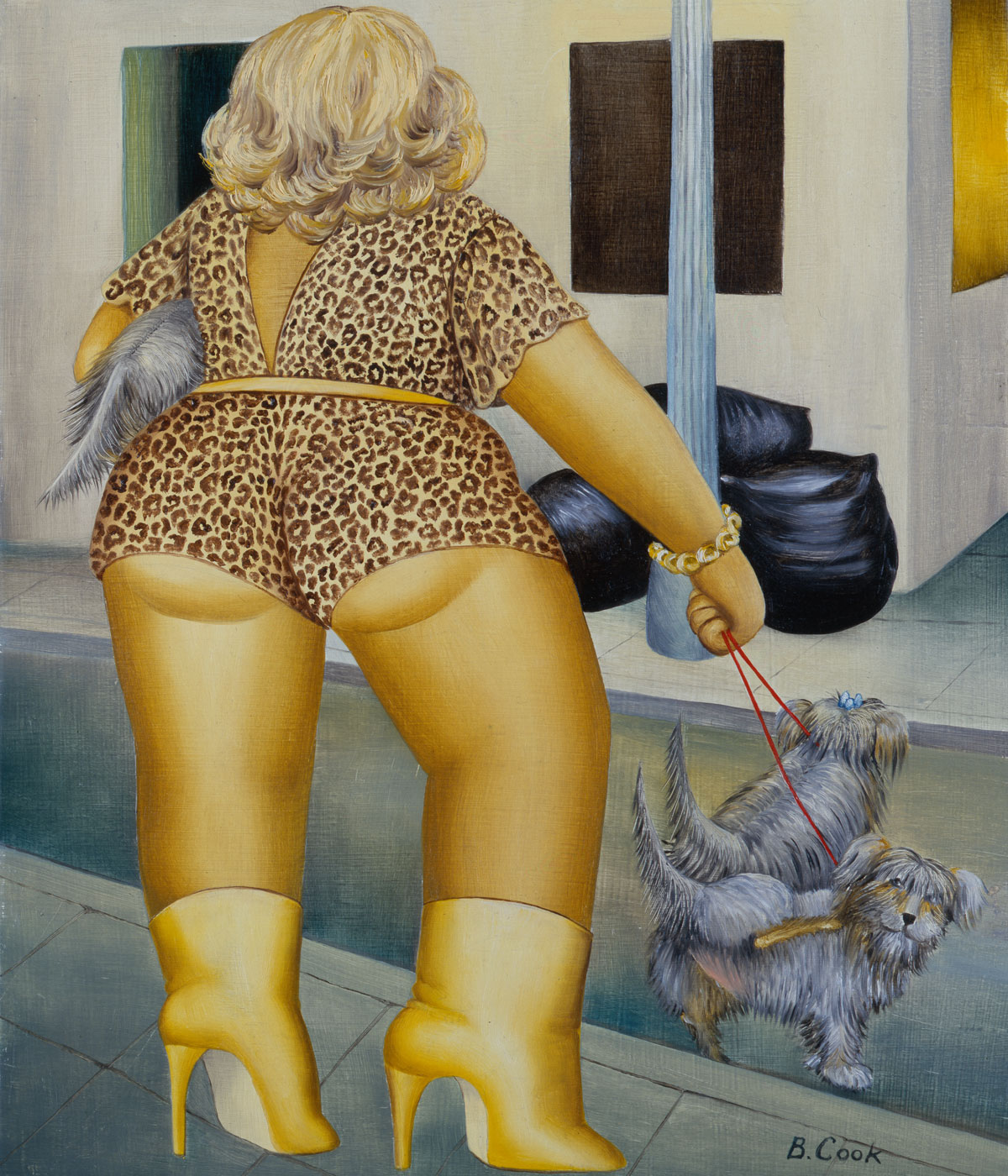
Wallpaper: Can you tell us why you wanted to unite these artists and draw parallels between their work?
Nicola Wright: Fundamentally, both Beryl Cook and Tom of Finland were artists who prioritised pleasure in their works and denied shame.
Though Tom of Finland’s work [preserved and celebrated by the Tom of Finland Foundation] was heavily based in fantasy, and designed to arouse, the artist aimed to produce images of gay men that counteracted the atmosphere of oppression and stereotypes of effeminacy he had grown up with. In contrast, Tom’s drawings present gay men as strong, happy, sexual – and public.
If Tom of Finland’s works are explicitly sexual, Cook is equally interested in sensual experience and excess, but she locates it in the convivial atmosphere of cafés, hen parties, with female protagonists such as her Lady of Marseille (c.1990).
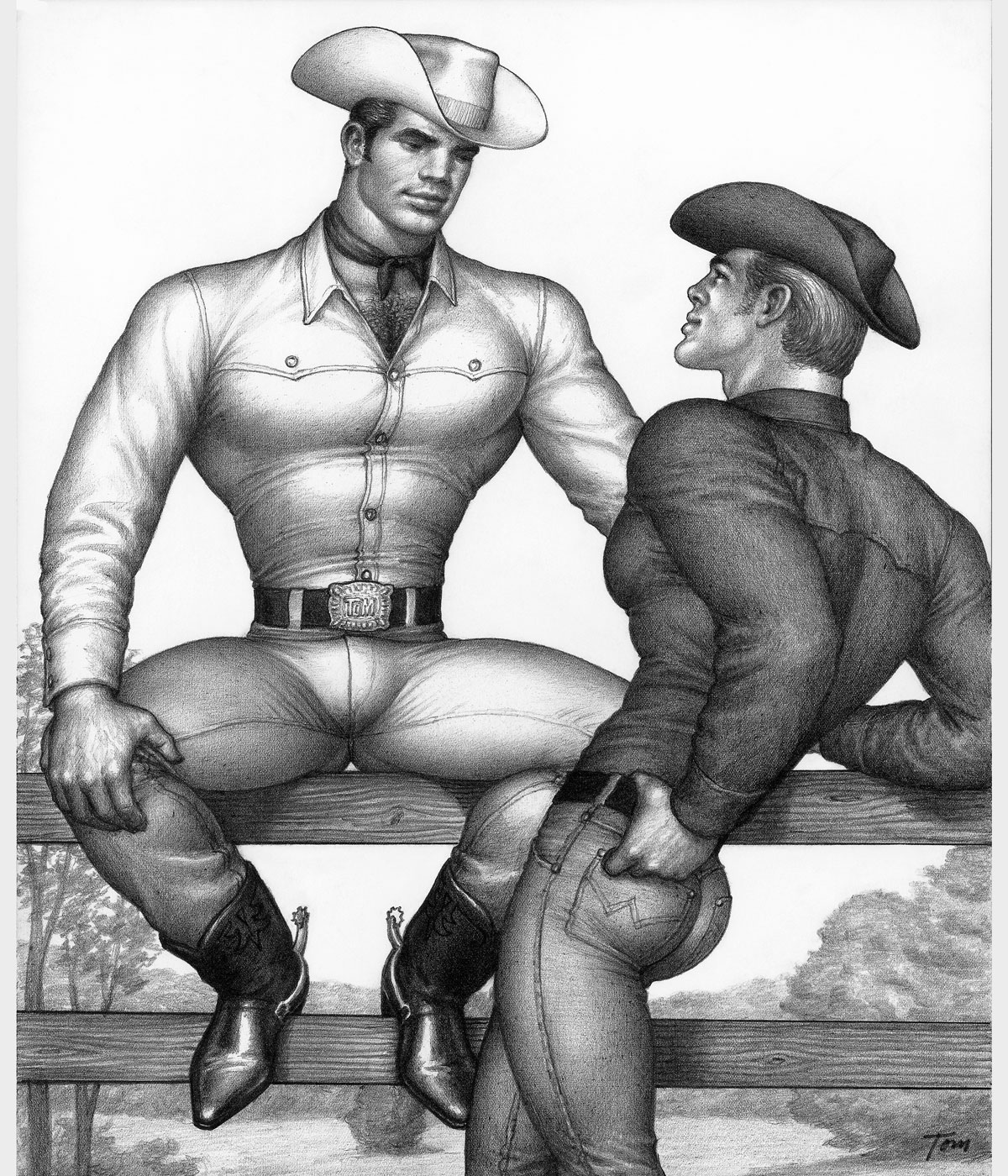
W*: In both artists’ work, the body takes on larger-than-life personas. How do they differ in the ways they portray this celebration of the body?
NW: Tom of Finland came to define a lexicon of queer masculine archetypes through his work. Although the artist adhered to a specific ideal in his depictions of men – tight narrow waists, broad shoulders, jutting jaws and bulging crotches – he exaggerated their attributes to heroic proportions and charged them with an explicit homoeroticism. In doing so, his works subverted heteronormative tropes of masculinity and authority, indelibly changing how gay men could be seen, and see themselves.
Cook’s images of larger women are in some ways the opposite of Tom’s men, but [the artists] share a way of hyperrealising the body that is visually powerful. [With Cook] heightening the details of their bodies, dress and expressions, the women in her works are both class-coded and engage with female-oriented forms of camp. Though playful, Cook’s women resist ‘polite’ femininity, fully and unapologetically taking up space. By prioritising and celebrating bigger bodies, Cook points to wider connotations related to the intersection of body size, gender and class.
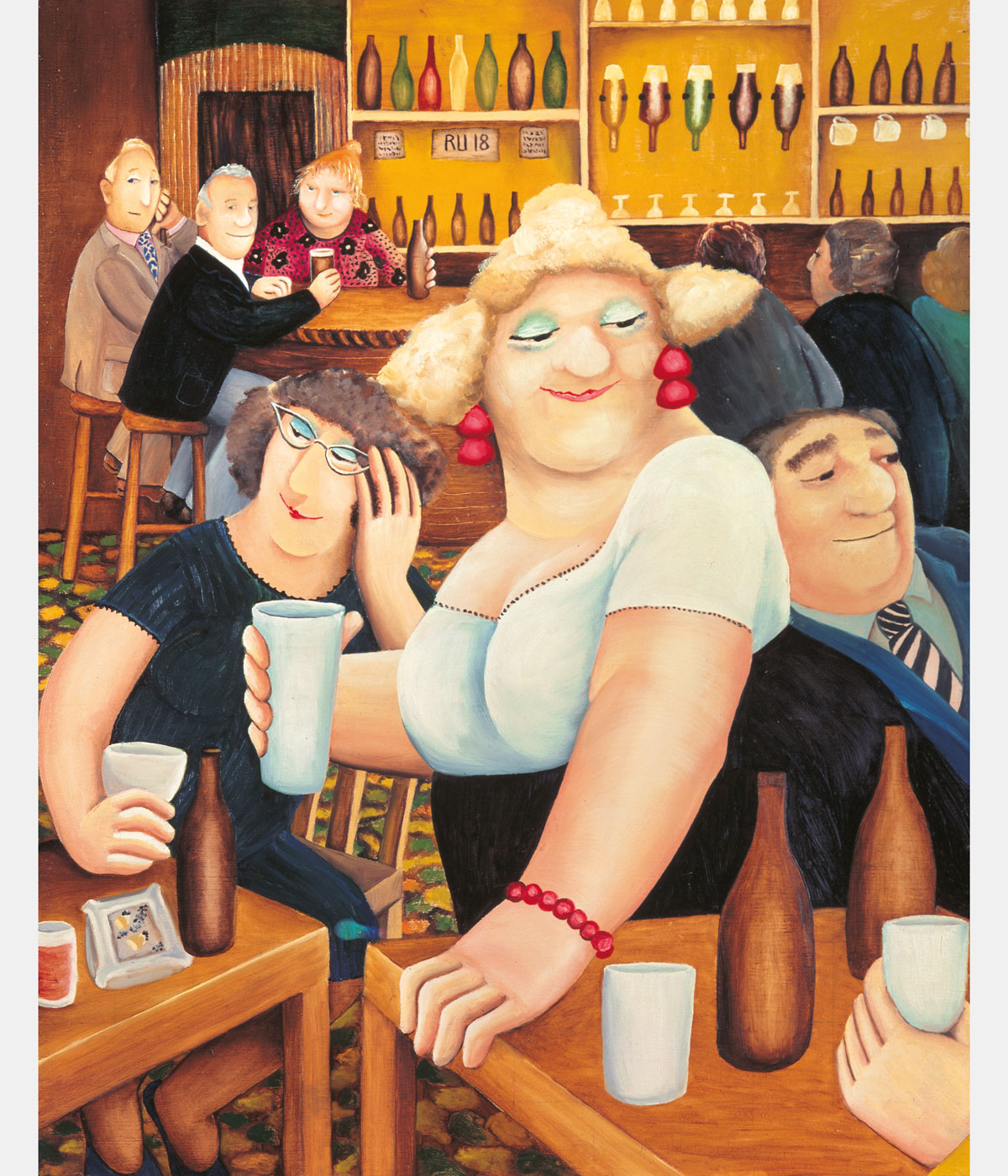
W*: What surprised you when viewing and considering these works together?
NW: The initial impulse to pair the two came from this sense that they shared a way of exaggerating bodies and an eye for excess. Numerous other ties became clear as we researched the show: their use of commercial platforms and methods of reproduction to circulate their works, the way both speak to ideas of class and taste.
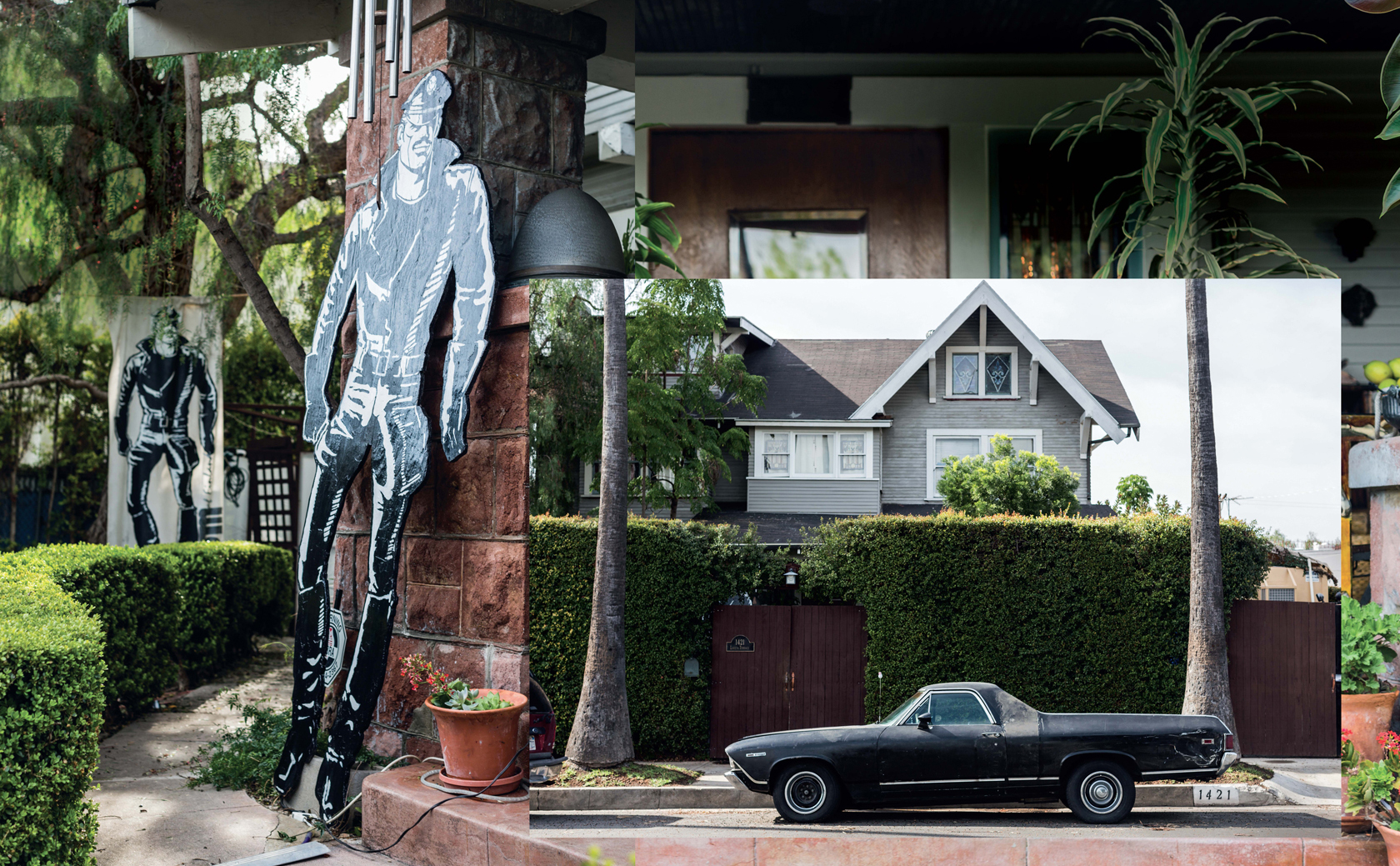
Tom of Finland: the icon who raised the homoerotic to high art
Their works also revealed more direct thematic lines – for example, Cook’s role in documenting queer life in works such as Lockyer Tavern (c.1974) and ‘Bangs’ Disco (1977). (Bangs was ‘London’s first gay superclub’ – after several permutations it emerged as the renowned G-A-Y nightclub.)
Both [artists] had respectively large fandoms, whom they cared about deeply: the exhibition includes some of Cook’s fan mail, which she always answered. Poignantly, the exhibition also includes some of Tom’s collected fan mail stamps. Fearing that his correspondence could ‘out’ his followers should it fall into the wrong hands, he destroyed the letters, keeping only the stamps as a memento.
‘Beryl Cook / Tom of Finland’ at Studio Voltaire, London, until 25 August 2024
